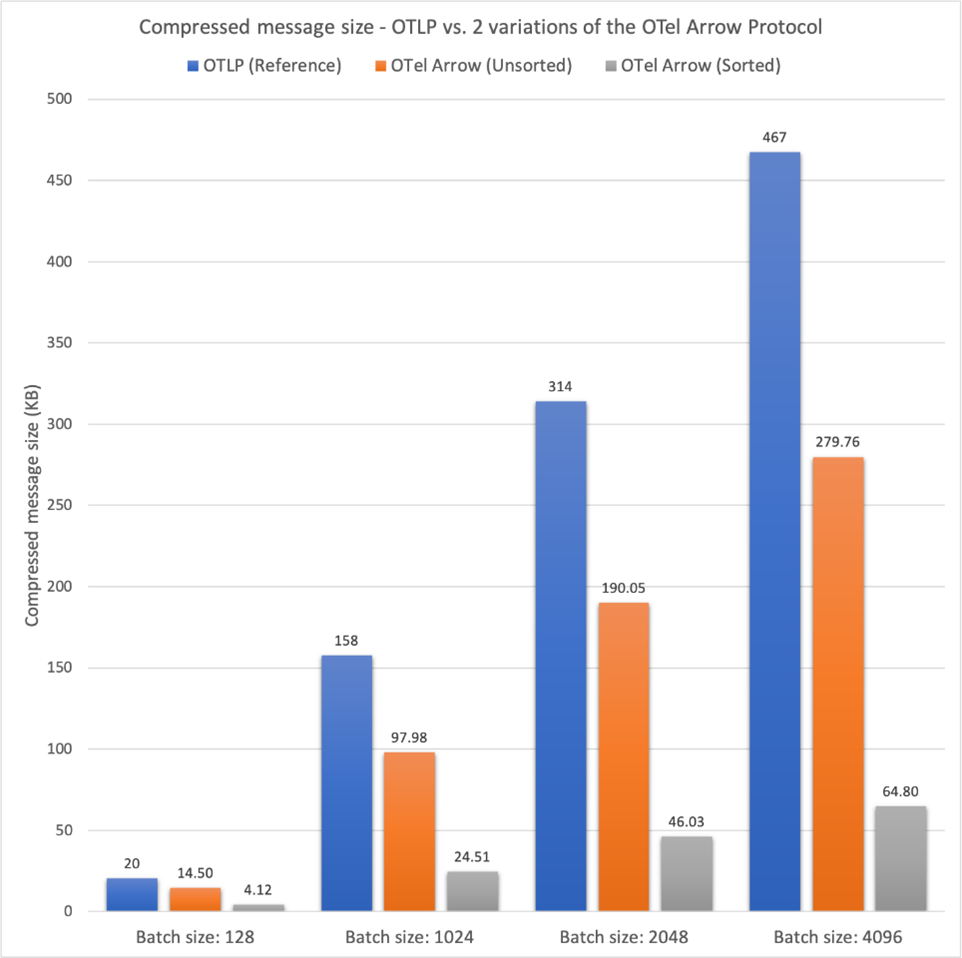La contribution de F5 à OpenTelemetry fait progresser notre vision des applications adaptatives
Chez F5, nous envisageons un monde numérique meilleur dans lequel les clients peuvent se concentrer sur la satisfaction de leurs clients et la croissance de leur entreprise sans être submergés par les risques de sécurité et de performances des applications. La télémétrie est essentielle pour y parvenir.
Aujourd’hui plus que jamais, les applications et les API sont les atouts les plus importants de l’entreprise numérique . Pour optimiser la sécurité, les performances et la valeur de ces applications, les organisations doivent les instrumenter, ainsi que leurs services et infrastructures de support, pour produire une télémétrie significative afin d'éclairer les actions. De nombreuses organisations utilisent aujourd’hui déjà la télémétrie pour détecter les problèmes dans leurs environnements. Un nombre croissant d’entreprises investissent dans des solutions d’observabilité et d’automatisation pour également prévoir les pannes probables. L’objectif ultime de ces efforts est d’affiner la télémétrie, les informations et l’automatisation appropriées pour éviter la plupart des types de pannes.
En effet, une télémétrie puissante constitue la base de la santé et de la sécurité des applications. Et pour utiliser efficacement la télémétrie, nous avons besoin d’un moyen commun de collecter et de transporter de grands volumes de données sur plusieurs systèmes et applications afin qu’elles puissent être transformées en informations exploitables. Une norme de télémétrie cohérente permet de résoudre le problème de la combinaison de données disparates formatées de manière incompatible par différents fournisseurs et produits.
Aujourd’hui, nous sommes ravis de lancer un nouveau protocole de télémétrie qui double à peu près le taux de compression du protocole OpenTelemetry (OTLP) existant, offrant ainsi des économies substantielles et des gains de performance aux organisations qui adoptent ou envisagent des systèmes avancés de télémétrie. Le nouveau protocole OTel Arrow s’inscrit dans notre engagement continu envers le projet open source OpenTelemetry de la Cloud Native Computing Foundation, qui définit un format standard pour la collecte et l’exportation des données de télémétrie. Nous sommes impatients de voir ce protocole ouvrir la voie à des optimisations encore plus poussées qui accéléreront le traitement des données.
Dirigé par Laurent Quérel, ingénieur distingué de F5, et en partenariat avec ServiceNow, société leader dans le domaine des flux de travail numériques, le nouveau protocole OTel Arrow double en moyenne la compressibilité de l'OTLP, en fonction de la charge de travail des données. Cela réduit à son tour la bande passante du réseau et les coûts réseau associés d’environ la moitié. Dans certaines situations, la compression observée peut être encore plus importante lorsque les mesures sont de nature multivariée, comme avec les produits F5 (voir le diagramme ci-dessous).
Ce protocole nouvellement conçu arrive à un moment où la quantité de télémétrie générée par les organisations augmente en raison de la prolifération des appareils et des capteurs, de la dépendance croissante aux technologies basées sur les données et l'IA, et du passage des déploiements d'applications monolithiques à des formes plus granulaires telles que les conteneurs et les fonctions sans serveur. Dans le même temps, les données de télémétrie sont de plus en plus distribuées : elles s’étendent sur des centres de données, plusieurs clouds et la périphérie. Ensemble, ces développements amplifient l’urgence d’optimiser la manière dont la télémétrie est transportée sur Internet.
La télémétrie est essentielle pour concrétiser notre vision des applications adaptatives
Le protocole OTel Arrow ouvre la voie à de futures améliorations dans le traitement des données de télémétrie et fait également partie intégrante de notre vision des applications adaptatives . Chez F5, nous travaillons vers un avenir dans lequel les clients peuvent rapidement détecter et neutraliser les menaces de sécurité, améliorer les performances et la résilience des applications, accélérer le déploiement de nouvelles applications et unifier facilement les politiques dans leurs environnements sur site, dans le cloud public et dans les environnements périphériques. L’objectif ultime est de réduire le coût et la complexité de l’exploitation des applications dans des environnements d’application disparates, en utilisant des techniques d’automatisation et d’apprentissage automatique qui transforment efficacement de vastes quantités de données de télémétrie en temps réel en informations exploitables pour nos clients.
Pour anticiper les risques de sécurité et de performance des applications, vous devez avoir une visibilité complète sur votre portefeuille applicatif. Vous avez aussi besoin d’analyses prédictives automatisées pour identifier rapidement les risques avant qu’ils ne deviennent problématiques. L’automatisation de ces analyses requiert d’importants volumes de données pour entraîner et affiner les modèles d’apprentissage automatique, afin d’analyser la télémétrie avec une précision croissante dans le temps. Les contributions open source qui améliorent le transport, le traitement, le stockage et l’interrogation de la télémétrie sont essentielles pour simplifier et réduire les coûts de l’analyse prédictive.
Réalisation d'analyses prédictives à grande échelle
Alors que nous travaillons à faire des applications adaptatives une réalité pour les clients, nous avons mis en œuvre le cadre d'observabilité OpenTelemetry avec F5 BIG-IP , F5 NGINX et F5 Distributed Cloud Services . Ces investissements nous permettent de mieux réaliser des analyses de données à grande échelle, tout en exploitant les capacités de l’IA et les modèles d’apprentissage automatique qui s’améliorent au fil du temps.
Grâce à une infrastructure de données solide, nous travaillons à offrir aux clients une vue globale de la santé et des performances de leurs applications et API, non seulement au sein de produits F5 spécifiques, mais sur l'ensemble de leurs portefeuilles d'applications. Cela nous aidera à fournir de manière proactive aux organisations les informations rapides sur la sécurité et les performances des applications dont elles ont besoin pour identifier et neutraliser rapidement les nouveaux risques.
La télémétrie en temps réel est essentielle, et ce qui place F5 à l’avant-garde, c’est que notre technologie réside dans le chemin de données de milliers de clients. La technologie F5 équipe 85 % des entreprises du Fortune 500 et près de la moitié des applications mondiales. L’énorme quantité de données dont nous disposons offre une visibilité instantanée sur les risques, nous aidant à créer des solutions automatisées qui protègent rapidement les organisations contre les nouvelles menaces dès leur apparition. À mesure que nous continuons à transformer la télémétrie en informations exploitables, les organisations pourront consacrer moins de temps à la gestion des risques et plus de temps au développement des innovations numériques qui améliorent l’efficacité commerciale et l’expérience client.
Au centre de notre vision des applications adaptatives, nous analysons efficacement d’importantes quantités de télémétrie issues de sources variées. Nos contributions continues à OpenTelemetry optimisent l’agrégation et l’analyse des données indispensables pour concrétiser cette vision.
Pour découvrir en détail la récente contribution de F5 au protocole de télémétrie, consultez notre communiqué de presse. Vous pouvez aussi lire les articles Partie 1 et Partie 2 sur le blog Apache Arrow.

